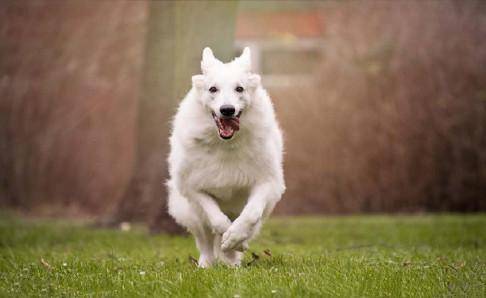Labrador training methods, Labrador is a very smart dog, easy to train. The ammunition starts from a young age so that it develops good habits. A well-trained Labrador can complete the action at the owner’s sign, but also allows it to live in harmony with the family. The following I share some tips for training Labrador.
A. Before training Labrador, you should know some basic points
1. Before training to establish a good relationship with Labrador, so that it trusts you enough to listen to you.
2. Help your Labrador to come up with a loud, catchy name that he will remember.
3. All commands for training must be clear and fixed, not often changing, while family members should be unified on all commands, otherwise the dog will not understand what we mean.
4. training Labrador to be patient, repeated training, although it is a very smart dog, usually taught a few times it can master, but remember to develop a habit, you must repeat the training to do so.
5. training Labrador do not stick education, not because it does not do a moment in place or do the wrong thing, beat it, which will stimulate the dog’s negative emotions, so training it will not cooperate with you and become even worse.
6. Timely rewards and encouragement are essential. Whenever a Labrador completes a training exercise or does a great job, it should be rewarded with a treat, a compliment, or a petting session.
Second, the Labrador specific behavior training steps
1, fixed-point bowel training (training after meals, the best results)
Lay dry newspaper soaked with urine in a fixed corner outside the kennel or in the bathroom of an apartment toilet and place the newspaper on top. In order for the Labrador to understand that this is the place to urinate and defecate, you should put a little of his excrement (e.g. urine) inside, as the newspaper has a familiar smell. In the early stages of training, the newspaper should be as large as possible, and then slowly teach him that he can only solve in the newspaper. Remember to praise him immediately when he does it right; otherwise, reprimand him briefly and firmly. Once the location of the dog’s toilet is decided, it is best not to ever move it around, so that it can also expand its range of motion in the home. However, teach your puppy to be patient and not to rush into the next action after you have become proficient in one.
2、”No” and “very good” training
When you see a Labrador behaving badly, stop it immediately. Give the “no” command to let him know that such behavior is not allowed and that he will be scolded by his owner. Conversely, if the Labrador is behaving well, praise him immediately with a “good” command and pet him on the head or neck to let him know that his owner likes his actions.
3, “wait” and “come here” training
The “wait” command is a temporary stop to the Labrador’s movements. When eating, place the food in front of the dog and give the “wait” command, and repeat the training. If he doesn’t come or run away when you call him, don’t get angry and chase him, just let nature take its course and call him again after a while. range. It is important to get used to leash pulling from a young age (especially when crossing the road, to avoid accidents ~), to the open space, let it go free, if it is a little away from you, to greet it back, and to develop a good habit of not moving away from the owner.
4, “sit” training – (the best results before meals)
The Labrador will not understand the command “sit” at first, so you must press down on his back with your hand and give the command “sit” at the same time, until he understands and sits quietly.
5, “handshake” training (implemented before meals, the best results)
Make sure your dog is familiar with the sit command and action before you implement it. When it sits quietly, please lightly lift your left or right hand and shout the shake command at the same time, and repeat the implementation until your dog can understand and listen to the shake command, that is, it is finished. Remember, do not be too hasty and teach another action before you are familiar with it, this is the biggest taboo in training.
6, “lying down (lying down)” training (the best results before meals)
If you want to train a Labrador to lie down, you should find a quiet place, and when it has quietly sat down, pull the front feet with both hands to form a lying down position, as long as it usually makes it feel that the master can be trusted, it is easy to train into, while patting it and praising it.

